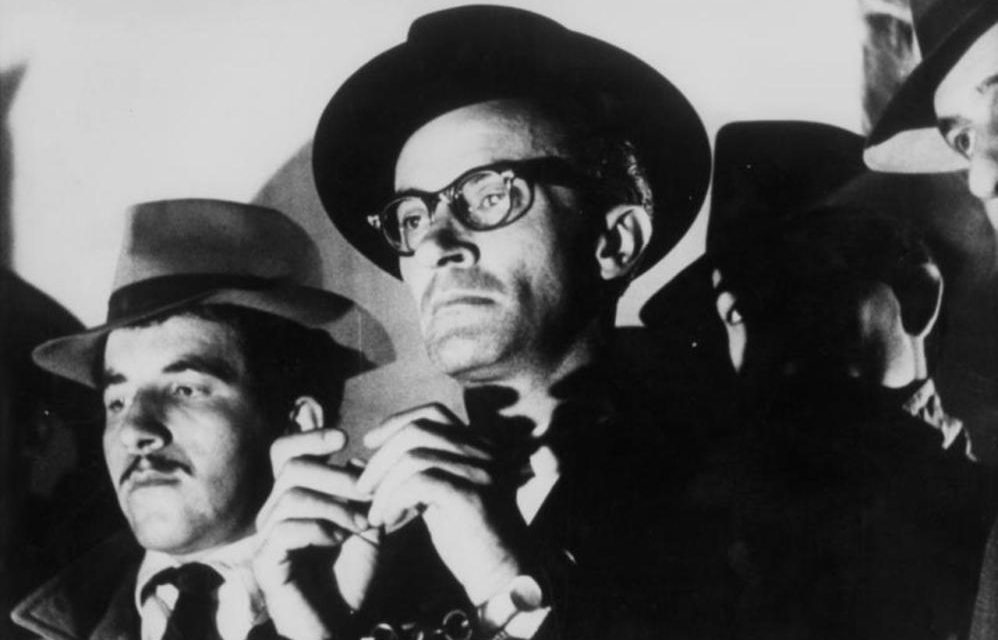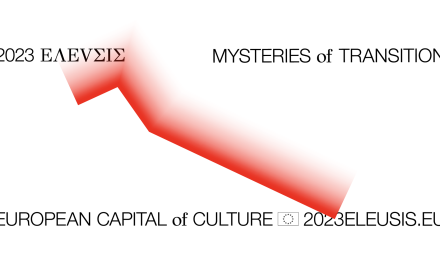In the opening sequence of the “The Ogre” (1956) Thomas, a timid clerk, braces himself for another lonely Christmas Eve, while facing the fear of eviction by his landlord. He suddenly discovers that he looks a lot like the frightful “ogre of Athens”, a ruthless criminal wanted by the police. At first, he panics, but then he agrees to impersonate the “ogre”, and, as such he is accepted by the members of an underworld gang. The gang is led by “Fat Guy”, owner of a popular cabaret they frequent where they prepare for the big heist: stealing a column from the Temple of the Olympian Zeus and selling it to American buyers. Thomas falls in love with Roula, the Babe, a young, beautiful and innocent singer at the cabaret, the object of Fat Guy’s desire. When it is revealed that Thomas is not the real ogre, the members of the gang who believed in him feel betrayed and react. A knife fight breaks out, and Thomas, wounded, barely manages to get out onto the street to take his last breath on the pavement.
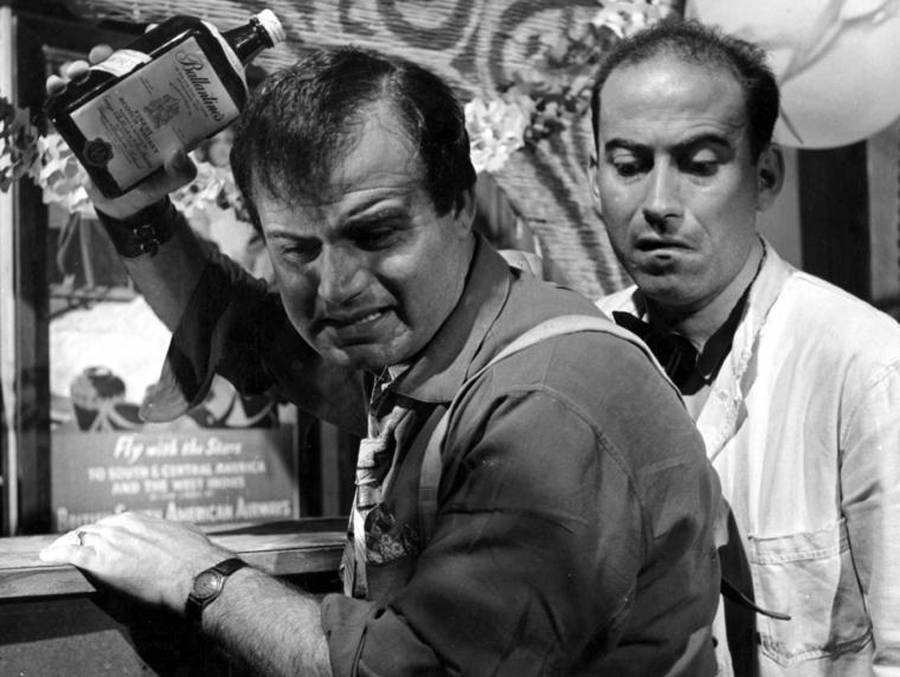
Giannis Argyris, Thanasis Vengos, “The Ogre” (1956)
Directed by Nikos Koundouros, on the script of Iakovos Kambanelis, a prolific literary figure and with the music score of Manos Chatzidakis, “The Ogre”, was initially met with negative critiques and didn’t find commercial success. Nevertheless, it won the award for best movie 1955–1959 in the first Thessaloniki Film Festival and it was screened at the Venice Film Festival. At the 2006 International Thessaloniki Film Festival, the film was voted one of the 10 best Greek films of all time, by the PHUCC (Pan-Hellenic Union of Cinema Critics). The film has been, as the great theoretician of Greek cinema, Vassilis Rafailidis commented, the passage of Greek Cinema to History from Pre History.
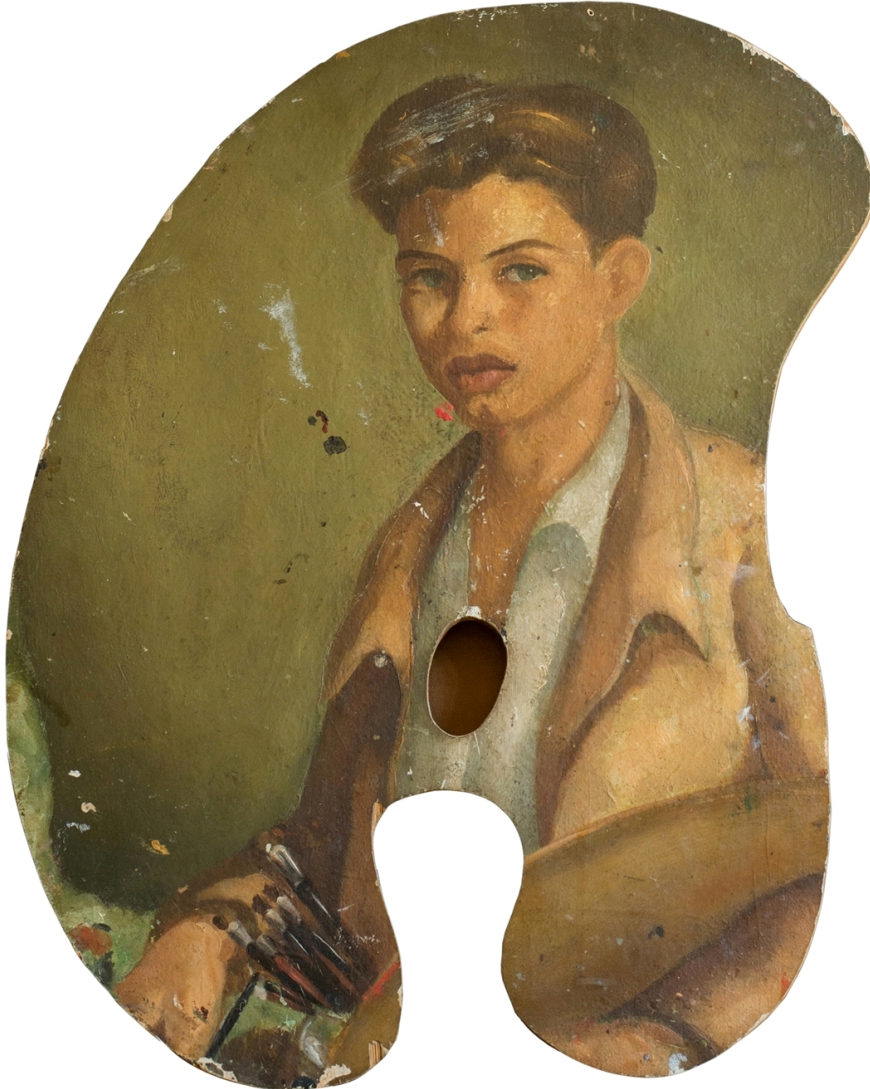
Nikos Koundouros’ palette with his self-portrait
Born in Athens in 1926, Nikos Koundouros was one of the most influential Greek film directors, whose pioneer vision is connected to the emergence of the New Greek Cinema. He studied painting and sculpture at the Athens School of Fine Arts from which he graduated in 1948. Because of his left-wing political beliefs, he was exiled to Makronisos Island after the end of World War II. He started his career as a director at the age of 28, in 1954, with the film “Magic City” that was influenced by neorealism. His second film “The Ogre” in 1956 brought him national and international recognition. His filmography includes “The Outlaws” (1959), “The River” (1958), “Young Aphrodites” (1963), “Vortex” (1971), “Songs of Fire” (1975), “1922” (1978), “Bordello” (1985), “Byron, A Ballad of a Man Possessed” (1992), “The Photographers” (1998), etc. He passed away on February 22. His background as a painter is always evident in his cinematic work as it is evident in “The Ogre” chiaroscuro lighting that builds a nightmarish, suffocating atmosphere and the psychological tension of a thriller.
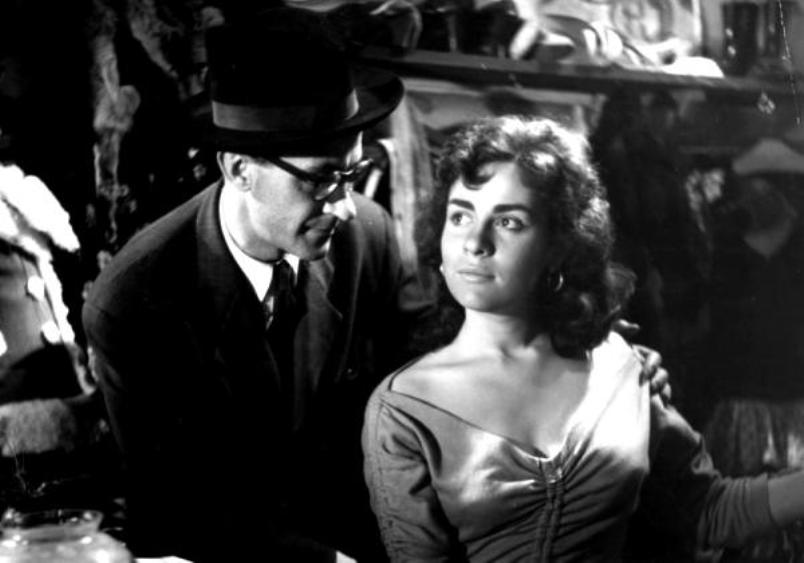
Dinos Iliopoulos, Margarita Papageorgiou, “The Ogre” (1956)
The Ogre of Athens is artistically influenced by expressionism and classic film noir, while its depiction of society has neorealistic traits and references to Greek tragedy. It is political at heart as it talks about post Civil War Greece and its dependence and submission to the West. As Koundouros had mentioned in an interview, the film was shot as a coded message. A light and subversive sense of humor is evident throughout the film which constitutes a multilayered text. It is one of the few films that depict the criminal underworld in a humoristic but not dehumanizing way. Nikos Koundouros used the ingredients of Greek cinema in a different composition and managed to reinvent them. His protagonist, Dinos Iliopoulos, a popular comic actor gives a brilliant performance in the leading role as a timid, lonely man who after finding out that his life is pointless, decides to embrace a different identity. Thanasis Veggos, who plays a member of the gang was discovered by Koundouros and later became an eminent comedian. Margarita Papageorgiou as Babe, is childlike, subverting the cliché of the typical femme-fatale protagonists in film noir, as film historian Aglaia Mitropoulos commented. Both in its form and content “The Ogre” was a film that changed the rules of narration and became the most emblematic work of Koundouros.
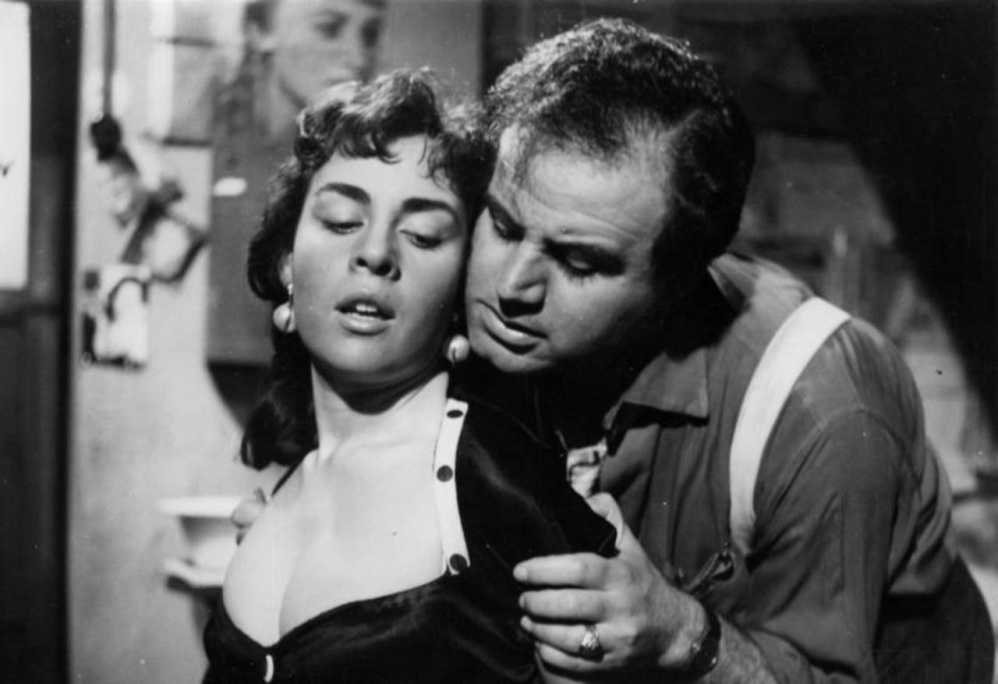
Margarita Papageorgiou, Giannis Argyris, “The Ogre” (1956)
As Vrassidas Karalis (“A History of Greek Cinema”, 2013, p.23) underlined, “The film remains to this day the most subversive and revolutionary text of Greek cinema: both formally and fictionally it reshaped the aesthetics of visual representation as a counter-style, in opposition to dominant forms of storytelling, which with their completeness and circularity confirmed the prevailing order of thinking. With Koundouros, oppositional aesthetics established their perpetual presence in Greek cinema as a complete and uncontested aesthetic statement.”
F.K.

